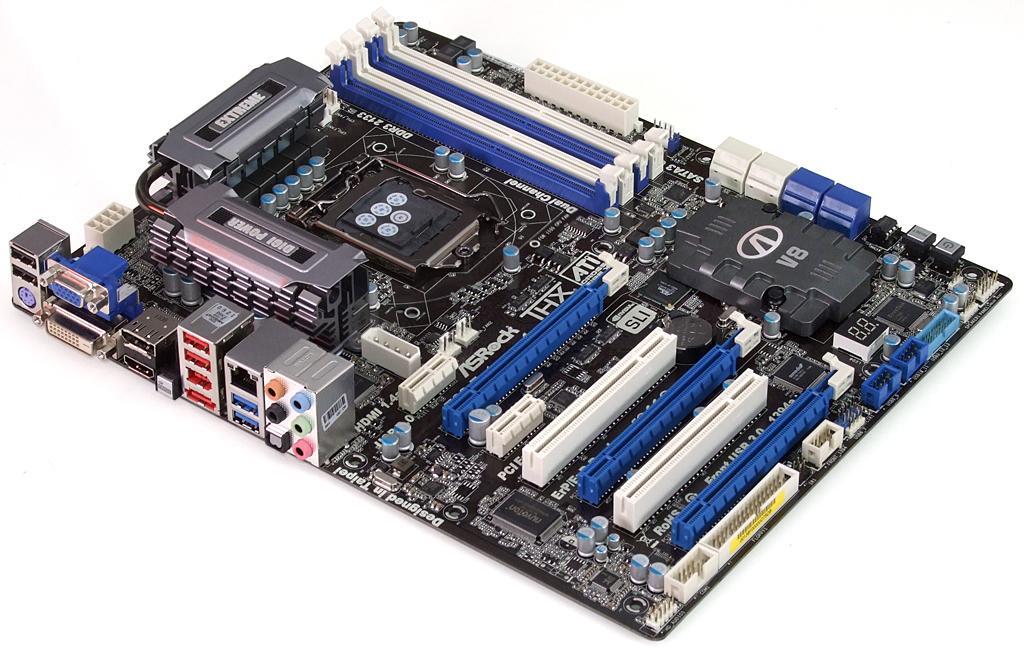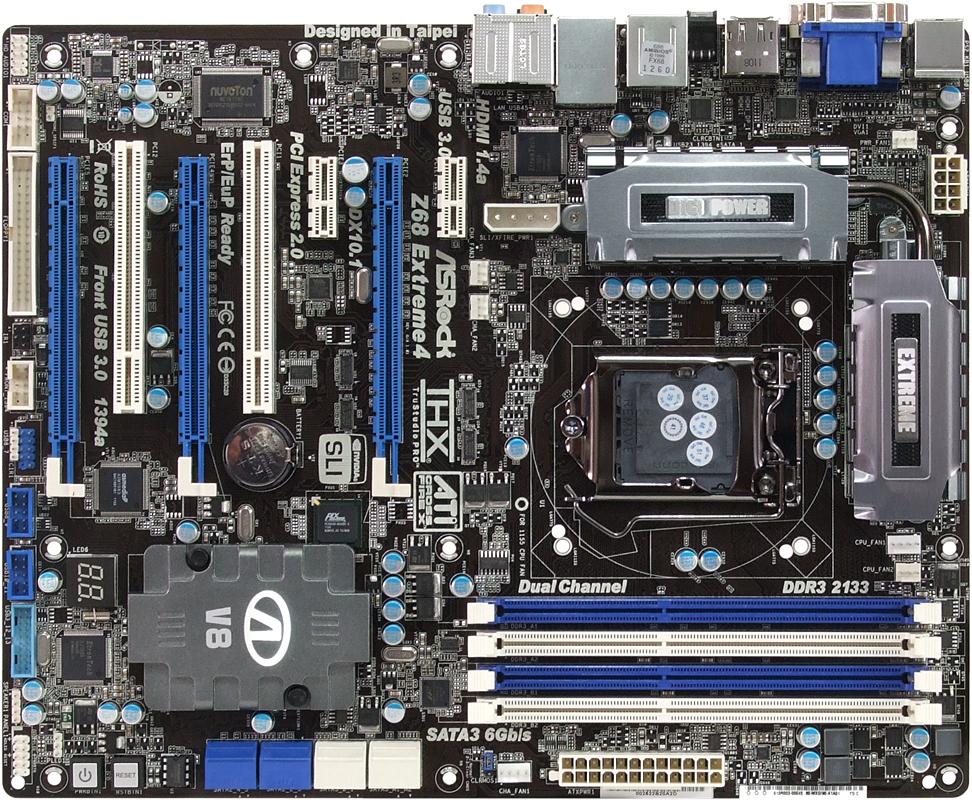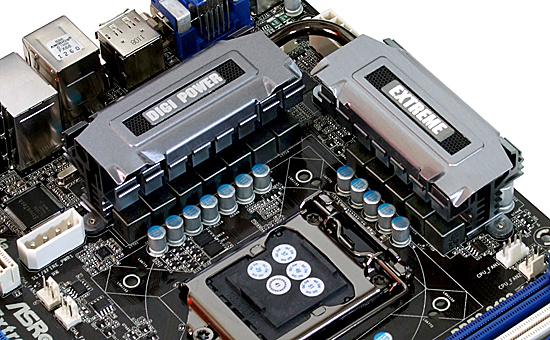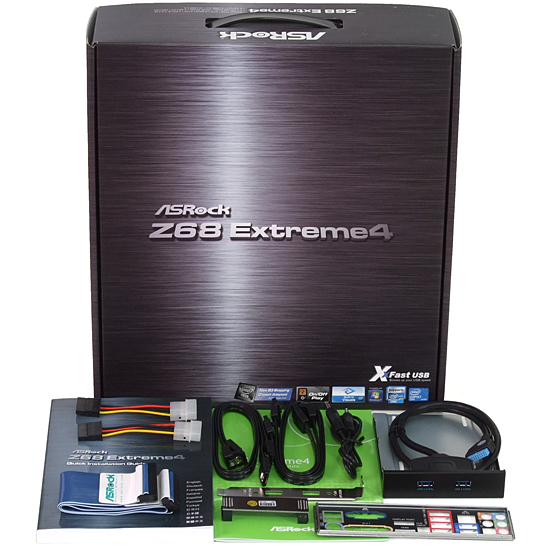Z68 Express Roundup: Three Motherboards Do Battle Around $200
Intel reserved its most feature-rich LGA 1155 platform for (or four?) months past the launch of its Sandy Bridge-based processors, but was it worth the wait? We compare three upper-mainstream Z68 examples to a top-quality P67 predecessor to find out.
ASRock Z68 Extreme4
Likely the best-equipped motherboard in today’s roundup, the Z68 Extreme4 uses a PLX PCIe bridge to keep all of its features active simultaneously. Five onboard interface controllers and two PCIe x1 slots share four of the Z68’s eight PCIe 2.0 lanes, while the other four are directed to a single x16-length slot at the bottom.
Those controllers include dual Etron USB 3.0, Marvell SATA/eSATA 6Gb/s, VIA IEEE-1394, and a Broadcom gigabit Ethernet IC. ASRock sees the reputable BCM57781 as an unusual strength, while we still spot the sharing of one SATA and eSATA connector on a single port as an unusual weakness. Those who wish to keep eSATA available must view this as a seven-internal-drive design.
Those eight lanes originating from the Z68 PCH are, of course, in addition to the sixteen provided directly by the CPU, allowing one graphics card full x16 lane width. The second card borrows eight lanes from the first via automatic pathway switches, allowing x8/x8 SLI and CrossFire at the lowest possible latency.
ASRock keeps its USB 3.0 port at the bottom edge, in spite of our previous protests, but its engineers did work to slide it forward to allow the included two-port bay adapter easier cable reach from any enclosure's mid-mounted 3.5” bay. Power and reset buttons make bench testing easier, a Port 80 diagnostics display makes it easier to figure out the origin of a boot failure, and a replaceable BIOS IC makes it easier to repair the board in case an overclocker does something terribly wrong.
Encouraging those over-the-top overclocking efforts is a 12-phase voltage regulator with fairly large chokes. ASRock has been providing overcurrent protection with its boards for a while, and has more recently increased the capacity of these components to a size where we no longer bump up against its limits.
ASRock’s Z68 Extreme4 comes with four SATA cables, the minimum we require of mid-range-or-better installation kits. ASRock’s big bonus is its dual-port USB 3.0 to 3.5” drive bay adapter, which includes a 2.5” drive tray in its frame and a card slot bracket for optional rear mounting. An SLI bridge and stereo mini-jack bridge add finishing touches.
Get Tom's Hardware's best news and in-depth reviews, straight to your inbox.
Current page: ASRock Z68 Extreme4
Prev Page Overclocking, Quick Sync, And SSD Caching Next Page Z68 Extreme4 UEFI-
Crashman user 18ASrock comes with 4 eSATA cables?KisakukuThe first UEFI screenshots for ASRock and Asus are switched.Fixed, thanks!Reply -
evga_fan ->ThomasReply
"Gigabyte’s Quick Boost application sets our processor at 200, 400, or 700 MHz beyond its rated frequency."
Just so you know. Anyways, keep up the good work!
Cheers -
crisan_tiberiu so, basicaly there is no difference in performance between theese boards as i can see.Reply -
hmm .. was thinking of getting an Asus P8Z68-V Pro .. not so sure now knowing that the other boards offer the same performance and are both cheaper.Reply
-
Olle P One additional feature of the ASRock card that isn't mentioned is its set of holes matching a socket 775 cooler. That feature was the main reason I ordered one of these cards three days ago, since I won't have to spend money on a new CPU cooler.Reply -
crisan_tiberiu Olle POne additional feature of the ASRock card that isn't mentioned is its set of holes matching a socket 775 cooler. That feature was the main reason I ordered one of these cards three days ago, since I won't have to spend money on a new CPU cooler.Reply
ermm thats pro, since i have a socket 775 core 2 duo atm. Any other motherboards out there that suport this?? i would love to know





